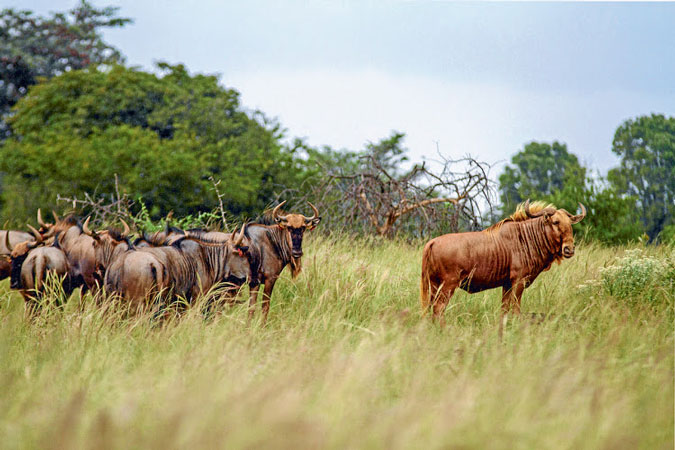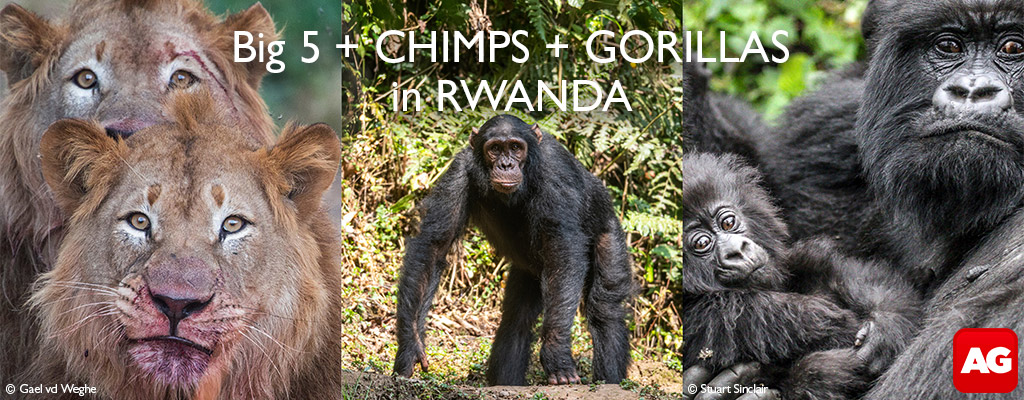The breeding of wildlife to produce unusually coloured animals, in the hope that hunters would pay a lot more to shoot them, has fallen flat in a spectacular manner — with the practice being widely condemned. Written by: Stafford Thomas for Financial Mail
If it sounds too good to be true, it probably is. The old adage has become a painful reality for speculators who stampeded into the colour-variant game sector.

Luring them were rocketing prices being paid at game auctions for colour variants bred in captivity and not found in the wild. Described as “unnatural freaks” by Peter Flack, one of South Africa’s foremost game experts, colour variants include black impala, white impala, gold wildebeest, white gemsbok and king wildebeest.
“Buyers grabbed anything they could at auctions,” says Johan Vorster, a Vleissentraal game auctioneer.
The idea was that hunters would pay more to shoot unusually coloured trophy animals. But what the buyers were getting into had all the makings of a classic pyramid scheme: early entrants make big money. Latecomers lose their boots.
This is exactly how it played out. By early 2016 prices of colour variants were already sliding. They went on to collapse.
It is not that there weren’t warning signs. As early as 2011 the International Council for Game & Wildlife Conservation (CIC) declared colour variants a manipulation of wild game and said they should not be hunted.
Average auction prices supplied by Game & Hunt of colour variants tell a sad tale. Among extreme examples, the average price paid for white impala in 2014 was R8.2m. In 2016 the average was R48,333.
Other colour-variant prices have suffered a similar fate. Of black impalas, which sold at an average of R384,964 in 2014, SA-based CIC executive Gerhard Damm says: “I doubt you will get more than R10,000 for a black impala ram.”
With colour-variant animals, a supply was created for which there is no real demand where it counts most — from hunters, says Lizanne Nel, conservation manager at the 45,000-member SA Hunters & Game Conservation Society (SA Hunters).
It is not only because of their unnatural nature that hunters shun colour variants.
“Most hunters want a responsible hunt,” says Nel. “You can’t have it when an animal is bred in captivity.”
Virtually all leading foreign hunting organisations have adopted this stance. Among them is the influential US-based Boone & Crockett Club, which has voiced strong opposition to the hunting of bred animals.
Nel believes the collapse in colour-variant animal prices is primarily thanks to advocacy work done by SA Hunters and other hunting and conservation bodies. Not all industry players fully agree.
Among them is game breeder Jacques Malan. He concedes “badmouthing by hunters” has done a lot of damage, but argues the biggest problem has been the devastating drought.
“There was no natural vegetation,” says Malan. “Breeders faced the huge expense of buying fodder.”
“The drought had a big impact,” says Vorster. “Some breeders had to sell at any price.”
Malan believes recent good rains will restore the colour-variant market’s fortunes. “The natural vegetation is back. We will see a lot of confidence return.”
Nel disagrees. The drought, she says, may have contributed to the collapse but the real damage has been done by the realisation that there is no viable market for colour variants.
“The colour-variant game is over,” says Flack. Damm agrees.
But Damm, Flack and Nel stress that the colour-variant controversy has dealt SA’s game industry another big reputational blow. It follows the huge damage done by the “canned lion” hunting debacle.
Canned lion hunting involves releasing captive-bred lion into small enclosures where they are shot with ease by “hunters”. It is a practice of which Flack has said: “It is not hunting, it is slaughter.”
The world agrees. The US has banned the import of lion trophies from SA.
The captive breeding of buffalo for hunting
There is another area of concern for conservationists: captive breeding of buffalo with exceptional horn-spread widths. Huge prices are paid for these animals. In September a new record for a single animal was set when a buffalo bull was sold for R168m. Four years earlier the record was R26m.
Buffalo ranchers claim they are breeding back top genetics ruined by reckless hunting in the past. Nel is not buying it.
“The principles are the same as those applying to colour variants,” says Nel. “Animals are dependent on humans. You can’t hunt them and then say it was a fair hunt.”
“You would think SA’s game industry is on a mission to self-destruct,” says Damm. Foreign hunter numbers coming to SA underscore his concern.
In 2014, the latest year for which data is available, 7,638 foreign hunters came to SA, less than half the best-yet figures of 16,394 in 2006.
The big winner is Namibia, a country free of canned hunting and colour variants.
“Foreign-hunter numbers to Namibia grew from 6,300 in 2007 to 23,768 in 2014,” says Flack
Also read: Recreational hunting: 50 years of scientific research
To comment on this story: Login (or sign up) to our app here - it's a troll-free safe place 🙂.![]()








